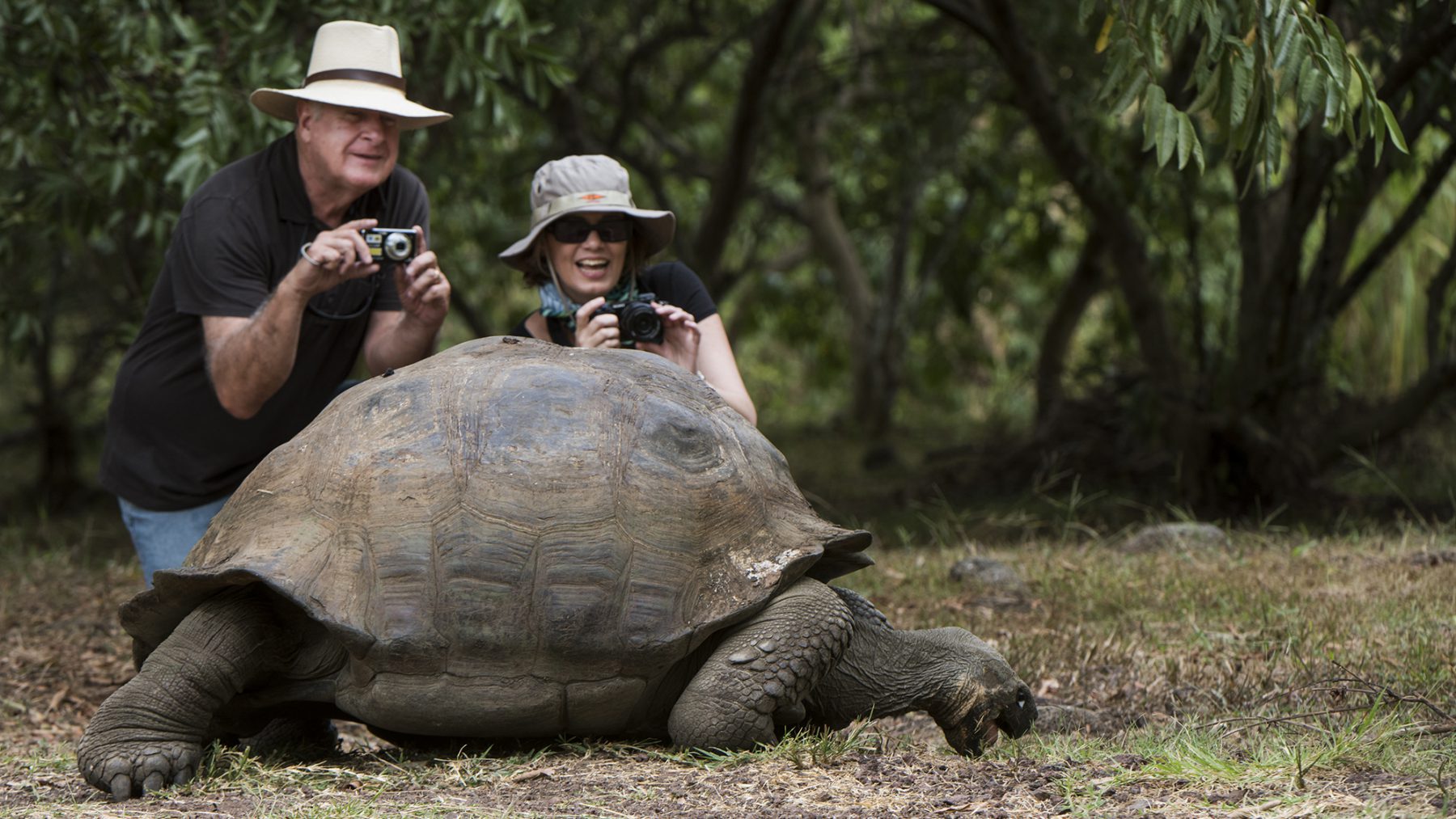Galapagos Animals

Adaptation, evolution, endemism and fearlessness are probably the concepts that best describe the only animals that complement the natural magic of the Galapagos Islands. The species that by chance were carried by ocean or air currents, managed to reach these isolated and remote islands, facing a very different and extreme environment. So, they had to adapt and evolve rapidly. Without large land predators on these remote islands, the animals lost their fear of being preyed upon. The result is a meekness difficult to find in wild species. The truly unique and fascinating forms and behaviors of these amazing species cannot be found anywhere else. They were, in fact, Charles Darwin’s inspiration for his Theory of Evolution.
Landbirds
In total, 49 species of land birds have been recorded in the Galapagos, 22 of which are endemic to the Islands. Land birds can be divided into 5 categories: Diurnal Raptors, Night Birds, Larger Land Birds, Aerial Feeders and Smaller Land Birds.
Mammals
In total, 32 indigenous species of mammals have been recorded in Galapagos in recent times. This excludes domesticated species which have become feral (dogs, cats, pigs, goats, donkeys, horses and cattle) and introduced rodents (rats and mice).
Marine Life
The seven major oceanic currents that reach the Galapagos Islands, but mainly the Humboldt Current, are responsible for an unusual grouping of over 500 species of fish – a marine variety that is found in tropical and cool water regions of the Pacific.[:es]Las siete corrientes oceánicas principales que alcanzan las Islas Galápagos, pero principalmente la Corriente de Humboldt, son responsables de una agrupación inusual de más de 500 especies de peces, una variedad marina que se encuentra en las regiones tropicales y de aguas frías del Pacífico.
Reptiles
Twenty eight species of reptiles have been recorded in Galapagos in recent times. Nineteen of these species are endemic to the archipelago, 11 of which are confined to single islands, and three species have been introduced.
Seabirds
Seabirds can be conveniently divided into 12 groups, as shown in the table below. This shows the number of species registered in each group and summarizes their status.[
Shorebirds
In total, 21 species of water birds have been recorded in Galapagos, 10 of which are endemic to the Islands. Thirty Four species of shore birds have been recorded in Galapagos, only 2 of which are endemic.[:es]En total, se han registrado 21 especies de aves acuáticas en Galápagos, 10 de las cuales son endémicas de las Islas. Se han registrado treinta y cuatro especies de aves playeras en Galápagos, de las cuales solo 2 son endémicas.

